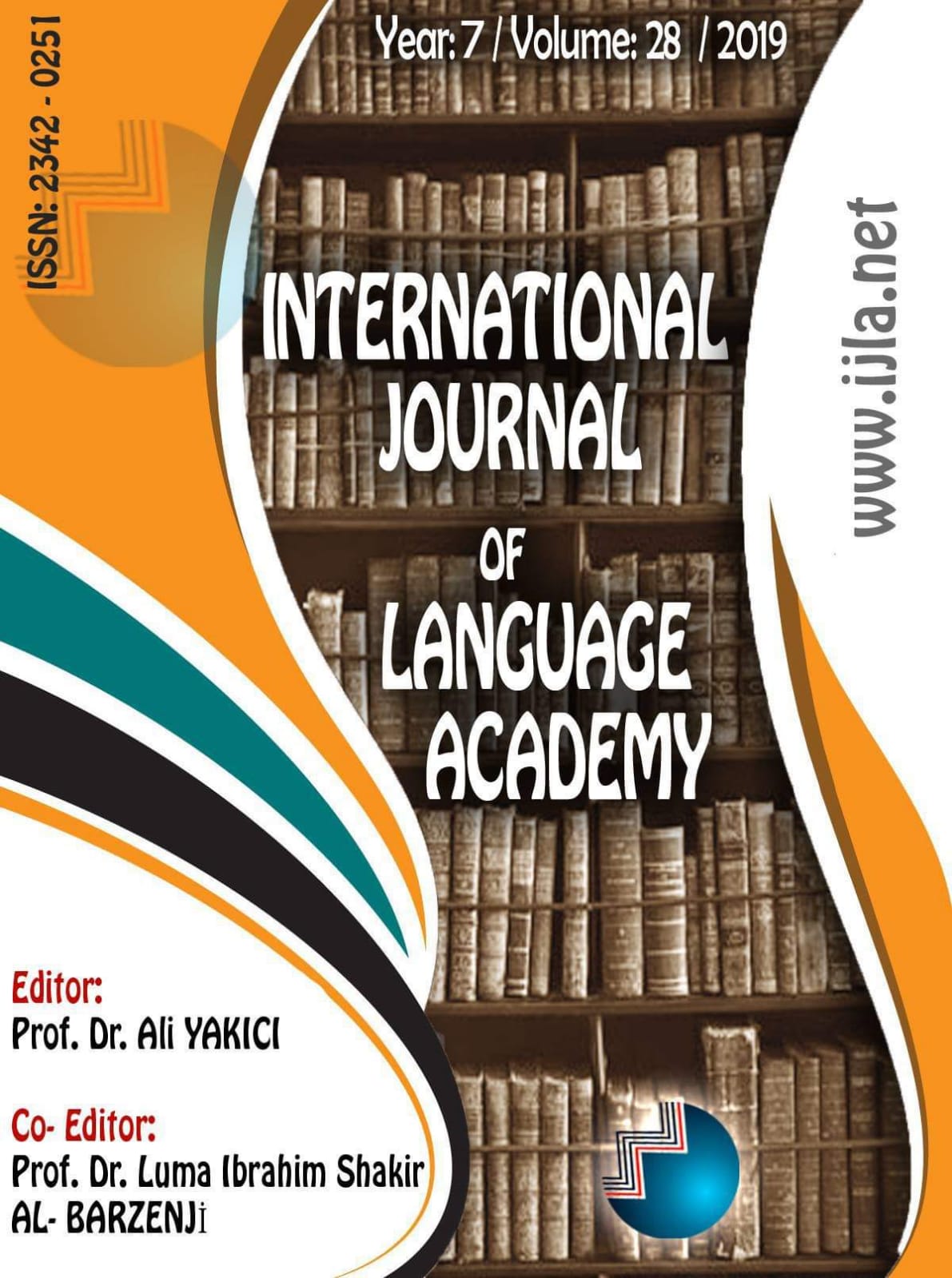THE IMPACT OF TEACHING TURN-TAKING TECHNIQUE ON STUDENTS' PERFORMANCE IN CONSECUTIVE INTERPRETING: A CASE STUDY
Author :
Abstract
This paper aims at investigating the impact of turn-taking technique in consecutive interpreting and to what extent teaching such technique improves on students' performance. Teaching this type of interpreting requires certain strategies and techniques to overcome the difficulties that students may face in interpreting task. Most of the interpreting students face many problems as they interpret consecutively because this type of communication requires unique skills and knowledge in order to perform this task successfully. Turn-taking is a core and specific spoken discourse characteristic that can be observed, described and analyzed in interpreting. Turn-taking is considered as unique and complex features that actively include the interpreter in determining, managing compelling and guiding the flow of the talk. Moreover, in turn-taking interpreters make decisions to manage and arrange turns due to and because of the surface linguistic meanings and social meanings vital in the situation and its expectations. This technique supports the students' memory by decreasing the cognitive load when the students take the turns as they interpret and increase their self-confidence. Forty students from Department of Translation/ College of Arts / University of Tikrit have used as participants in this study. A ten- closed items questionnaire has been distributed to the participants to see their perspectives on this technique in such consecutive interpreting. The analysis of their responses to the questionnaire's items refers to their tendency to adopt such technique in performing such task.
Keywords
Abstract
This paper aims at investigating the impact of turn-taking technique in consecutive interpreting and to what extent teaching such technique improves on students' performance. Teaching this type of interpreting requires certain strategies and techniques to overcome the difficulties that students may face in interpreting task. Most of the interpreting students face many problems as they interpret consecutively because this type of communication requires unique skills and knowledge in order to perform this task successfully. Turn-taking is a core and specific spoken discourse characteristic that can be observed, described and analyzed in interpreting. Turn-taking is considered as unique and complex features that actively include the interpreter in determining, managing compelling and guiding the flow of the talk. Moreover, in turn-taking interpreters make decisions to manage and arrange turns due to and because of the surface linguistic meanings and social meanings vital in the situation and its expectations. This technique supports the students' memory by decreasing the cognitive load when the students take the turns as they interpret and increase their self-confidence. Forty students from Department of Translation/ College of Arts / University of Tikrit have used as participants in this study. A ten- closed items questionnaire has been distributed to the participants to see their perspectives on this technique in such consecutive interpreting. The analysis of their responses to the questionnaire's items refers to their tendency to adopt such technique in performing such task.





